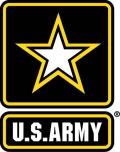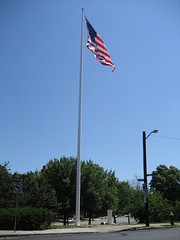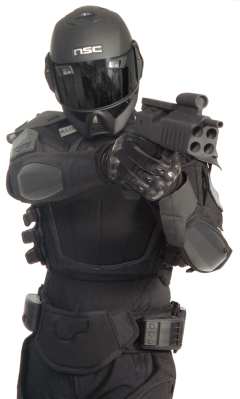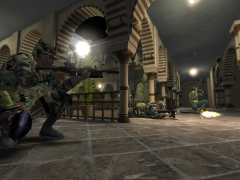War, the business of a military, requires an immense commitment from a leader’s followers in order to result in success. To obtain such a strong commitment, military leaders should and are charismatic. They build trust among their followers to the point of followers trusting their leaders with their very lives.
One of my first thoughts about Dave, from the Business Week article Leadership, the Army Way, is he’s a charismatic leader.  Instead of yelling at his lieutenant, Dave brings him to a private office and calmly explains to the lieutenant why and how he made a mistake. By taking the lieutenant aside, and not publicly humiliating or degrading him, Dave acted as the perfect role model for how the lieutenant should act. Active image building and role modeling is stated by Nahavandi as a prime characteristic of charismatic leaders [Art and Science of Leadership (4th Edition) by Afsaneh Nahavandi pp. 231], and Dave shows the lieutenant the correct way to critique and provide feedback in the army, in private. By privately critiquing the lieutenant, Dave preserves his dignity and the lieutenant avoids feeling resentment towards Dave.
Instead of yelling at his lieutenant, Dave brings him to a private office and calmly explains to the lieutenant why and how he made a mistake. By taking the lieutenant aside, and not publicly humiliating or degrading him, Dave acted as the perfect role model for how the lieutenant should act. Active image building and role modeling is stated by Nahavandi as a prime characteristic of charismatic leaders [Art and Science of Leadership (4th Edition) by Afsaneh Nahavandi pp. 231], and Dave shows the lieutenant the correct way to critique and provide feedback in the army, in private. By privately critiquing the lieutenant, Dave preserves his dignity and the lieutenant avoids feeling resentment towards Dave.
Dave’s ability to promote his lieutenant and point out his positive actions also shows great communication skills, as he pumps up the soldier by praising him “Lieutenant, you do a great job”, which would hopefully pique his interest in what Dave is saying, and then Dave calmly critiques the soldier “It is unacceptable for you to refuse an order…”, and then again praises him and empowers him “I need you on this team”. Good communication skills are critical to a charismatic leader, as poor communication can create misinterpretations and weaken the leader’s charisma. Using private communication also prevents other soldiers from seeing Dave lash out at a fellow soldier, such harsh and public criticism could diminish Dave’s charisma and weaken his bond with his soldiers.
Dave’s ability to stay calm while a soldier defies his orders also shows immense self-confidence and a strong conviction that his ideas are correct. Understanding that the soldier disobeying orders is not a huge detriment to Dave’s leadership ability, shows that Dave realizes where his and the group’s priorities lie, as Liz Ryan points out, “…being embarrassed by an underling is a minor problem compared with ensuring a good outcome for the team.” Dave feels his orders are valid and explains to the lieutenant why he should follow them. Dave is not insulted by the refusal, but rather sees it as an “opportunity to clearly articulate followers’ role in managing the crisis” [Art and Science of Leadership (4th Edition) by Afsaneh Nahavandi pp 235].
The textbook [pp. 231] gives a few examples of how charisma motivates followers, “‘He was so optimistic, so sincere, so genuine, I decided I’d follow him anywhere'” and “‘He is the kind of guy people walk through walls for'” shows the exact dedication that solders need to exhibit to their leaders, and that leaders must work to gain from their followers. A military leader who is not charismatic runs the risk of not only demotivating his followers and decreasing their effectiveness, but also of being personally harmed (after all, these soldiers are all armed and might take exception to being treated too poorly).
The use of teams in the military seems intuitive, after all, one man (or woman) cannot defeat an army [although examples do exist of the power of individuals, for instance the man who stood up to the tanks in Tiananmen Square]. The military may in fact have produced the first instances of cross-functional teams, way before the corporate world even considered them. Consider that a military team would employ medics, engineers, commanders, communication experts, linguists, snipers, foot soldiers, artillery, sailors, and many more types of soldiers in one unit, or as one attack force. Many times, a military will send in different types of attacks, for instance sending spys and snipers to perform reconnaissance and targeted attacks, then bomber planes to weaken installations and cause heavy damage and then having ground soldiers and artillery follow up and “clean up” the remaining enemy force. Even going back in history, armies would use multiple types of attacks, for instance catapults would weaken a castle and then soldiers would rush in after the defenses were compromised.
Although the hierarchical structure of the United States military, with visible, symbolic symbols indicating rank, limits total adoption of participation, it is an element of military strategy. The majority of the criteria is in place for the military to use participation. As the Iraq war shows, the task of war is complex and quality is extremely important. An appropriate strategy would be to utilize cultural, geographical, and historical experts, veterans of previous wars in the Middle East, linguists with an ability to properly translate intercepted communication, experts on our military’s capabilities and experts on the tactics of the Iraqi insurgents. Even with all of these experts, the war is still complex and constantly changing.
Follower commitment is obviously a necessity for a military to function properly.  To risk one’s own life and pursue the death of others requires an immense sacrifice and commitment to the goals of the war. Our military allows for conscientious objectors to pursue alternatives to military service, as someone who is morally opposed to war will simply not exhibit the commitment and motivation to attack and kill the enemy. Personally, I am glad I have not yet been forced into a situation that would test my moral stance on being a soldier. Fully handing over one’s life, and trusting your leadership to correctly identify the “bad guys”, and fully committing to squeezing that trigger is, personally, a mind boggling concept to wrap my mind around. It’s quite amazing the dedication our soldiers show.
To risk one’s own life and pursue the death of others requires an immense sacrifice and commitment to the goals of the war. Our military allows for conscientious objectors to pursue alternatives to military service, as someone who is morally opposed to war will simply not exhibit the commitment and motivation to attack and kill the enemy. Personally, I am glad I have not yet been forced into a situation that would test my moral stance on being a soldier. Fully handing over one’s life, and trusting your leadership to correctly identify the “bad guys”, and fully committing to squeezing that trigger is, personally, a mind boggling concept to wrap my mind around. It’s quite amazing the dedication our soldiers show.
Time is simply a luxury one rarely has in battle. If the enemy ambushes you, there is no time to reschedule or ask for an extension, one must act right then and there. Also, interaction is limited by the chain of command in the military, although there are exceptions, for instance when a soldier has privileged information about the enemy’s position or strategy. This privileged information is a huge reason why participation, to a certain extent, is utilized in modern military strategy. Soldiers are expected to communicate with each other and leaders share information down the chain of command too. The military’s Future Force Warrior program focuses on connecting all soldiers on the battlefield via a digital intranet that will allow soldiers “to share data with vehicles, aircraft and other individual soldiers.” The US Army’s Natick Research, Development & Engineering Center responsible for the Future Force Warrior program describes a crucial element of this advanced technology as:
Sensors & Communications (C4ISR) Vision: Netted FFW small unit/teams with robust team communications, state-of-the-art distributed and fused sensors, organic tactical intelligence collection assets, enhanced situational understanding, embedded training, on-the-move planning, and linkage to other force assets.
The Natick RDE center also states, “An integrated system of systems approach is being employed to support the Army transformation to a Soldier-centric force.” In other words, each individual soldier is being empowered with enough data to analyze their personal situation, as well as communicate this data instantly to the rest of the military.  The military is heavily interested in, and is developing self-managed soldier teams with provisions of super and self-leadership, especially in terms of sharing information. When one considers that the United States military heavily supported and developed the internet, this focus on enabling individual soldiers to share information and implement decisions should not come as a surprise. As technologies developed through the Future Force Warrior program are implemented on the battlefield, individual soldiers will be expected to manage their own work, coordinate with other teams and individuals, and share information in ever increasing proportion. Many times, the soldier on the ground has a more accurate perspective on the battle than a general back in a base. As these technologies enable soldiers to distribute and receive information, they will be so empowered with information that analysis of the information will be a crucial element in training for all soldiers, not just leaders.
The military is heavily interested in, and is developing self-managed soldier teams with provisions of super and self-leadership, especially in terms of sharing information. When one considers that the United States military heavily supported and developed the internet, this focus on enabling individual soldiers to share information and implement decisions should not come as a surprise. As technologies developed through the Future Force Warrior program are implemented on the battlefield, individual soldiers will be expected to manage their own work, coordinate with other teams and individuals, and share information in ever increasing proportion. Many times, the soldier on the ground has a more accurate perspective on the battle than a general back in a base. As these technologies enable soldiers to distribute and receive information, they will be so empowered with information that analysis of the information will be a crucial element in training for all soldiers, not just leaders.
From playing video games [to anyone who doubts the applicability of video games to a discussion on US military strategy, I urge you to visit the America’s Army site, home of the Army developed and distributed video game, the Army sees immense value in video game war simulations] that are heavily influenced by real-life future military technologies (Tom Clancy’s line of video games in particular, the military shares advanced technologies with Mr. Clancy because, well, he is a huge, huge supporter and promoter for them, his line of Ghost Recon games utilizes many of the concepts in the Future Force Warrior program), it’s quite apparent the military is moving to empowering their soldiers by sharing as much information with them, and enabling soldiers on the ground to share information back. Soldiers will soon be able to transmit locations of enemy soldiers to their fellow soldiers, vehicles and leaders back at base. Military simulations also show the the emphasis placed on teams by the military. In realistic [or as realistic as possible, after all video games are for entertainment purposes] simulations, if an individual charges into the middle of a battlefield with guns blazing, they will be shot and killed quickly. Instead, players are encouraged to communicate with their team members and plan a mutual strategy where each individual is in sync with the rest of the team.
their soldiers by sharing as much information with them, and enabling soldiers on the ground to share information back. Soldiers will soon be able to transmit locations of enemy soldiers to their fellow soldiers, vehicles and leaders back at base. Military simulations also show the the emphasis placed on teams by the military. In realistic [or as realistic as possible, after all video games are for entertainment purposes] simulations, if an individual charges into the middle of a battlefield with guns blazing, they will be shot and killed quickly. Instead, players are encouraged to communicate with their team members and plan a mutual strategy where each individual is in sync with the rest of the team.
It does not surprise me that the United States military places such a huge emphasis on effective, efficient, committed, and creative teams, as generals simply cannot lead every soldier and thus the teams on the ground must be able to make appropriate decisions themselves. Further, the military can be considered as one big team, fighting other teams. Think about it logically. Literally, our military is responsible for protecting our country, so shouldn’t they research and utilize the most cutting edge techniques and technologies for improving individual soldier’s and the whole military’s effectiveness and efficiency? The strength of our military may be the most important asset our country possess, so why wouldn’t we do anything to increase its strength? Whether it’s more accurate bombs and rifles, better armor, or more effective leadership, don’t you think the military would be first in line to try new methods and technologies? With the amount of money we pump into military research, we should expect the military to be at the forefront of many technologies and techniques, not the least of which is leadership.
The above post is my response to discussion assignment 5A for the School of Management 697PP: Perspectives on Leadership course at the University of Massachusetts at Amherst.
The assignment was to:
…think about what the case implies about the army’s views of leadership, teams, participation, delegation, and other concepts… Is there a sea change going on in the army as far as teams and leadership, or is this an isolated case?
What do you think? Has the United States military management strategy changed over the past few decades? Are you a veteran with particular insight on this article? Is the Full Metal Jacket style of leadership and training a myth?